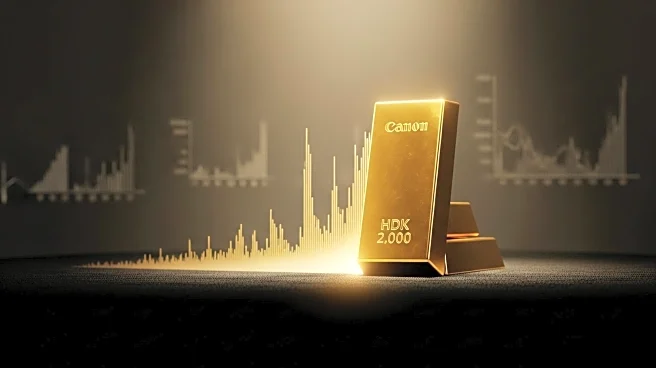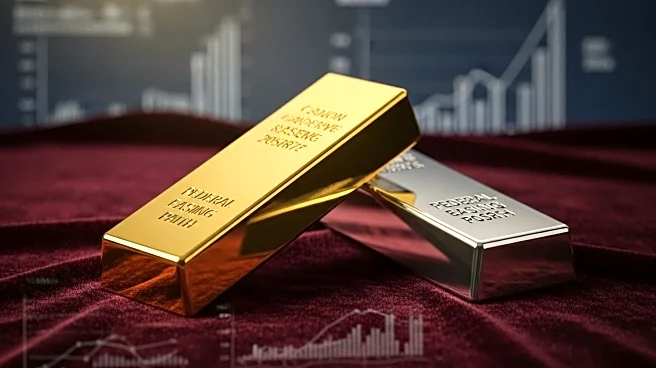What's Happening?
Gold prices have surged to nearly $3,600 per ounce, driven by weak U.S. jobs data and expectations of Federal Reserve rate cuts. Spot gold increased by 1.4% to $3,596.55 per ounce, marking its strongest weekly gain in nearly four months. U.S. gold futures for December delivery also rose by 1.3% to $3,653.30. The rally is attributed to U.S. dollar weakness, central bank buying, and geopolitical uncertainty. Recent data showed a sharp decline in U.S. job growth in August, with the unemployment rate rising to 4.3%. This has led traders to anticipate a 90% chance of a 25-basis-point rate cut and a 10% chance of a 50-basis-point cut in September.
Why It's Important?
The surge in gold prices highlights the market's response to economic uncertainty and the Federal Reserve's monetary policy. Gold, which does not pay interest, becomes more attractive when interest rates are low, serving as a safe haven for investors. The weakening U.S. labor market and potential rate cuts could further bolster gold's appeal. Additionally, the independence of the Federal Reserve is crucial, especially after President Trump attempted to influence its decisions. The situation underscores the delicate balance between economic indicators and monetary policy, impacting investors and central banks globally.
What's Next?
Traders and analysts are closely monitoring the Federal Reserve's next moves, with multiple rate cuts anticipated due to labor market concerns. The upcoming release of China's central bank gold reserves data may provide insights into how high bullion prices are affecting demand. The trajectory of gold prices will likely depend on further economic data and geopolitical developments, with potential implications for global markets and central bank strategies.
Beyond the Headlines
The current economic climate raises questions about the long-term implications of monetary policy decisions and their impact on global financial stability. The role of gold as a hedge against inflation and economic uncertainty may lead to shifts in investment strategies and central bank reserves management. The interplay between U.S. economic indicators and global demand for gold could influence future policy decisions and market dynamics.











